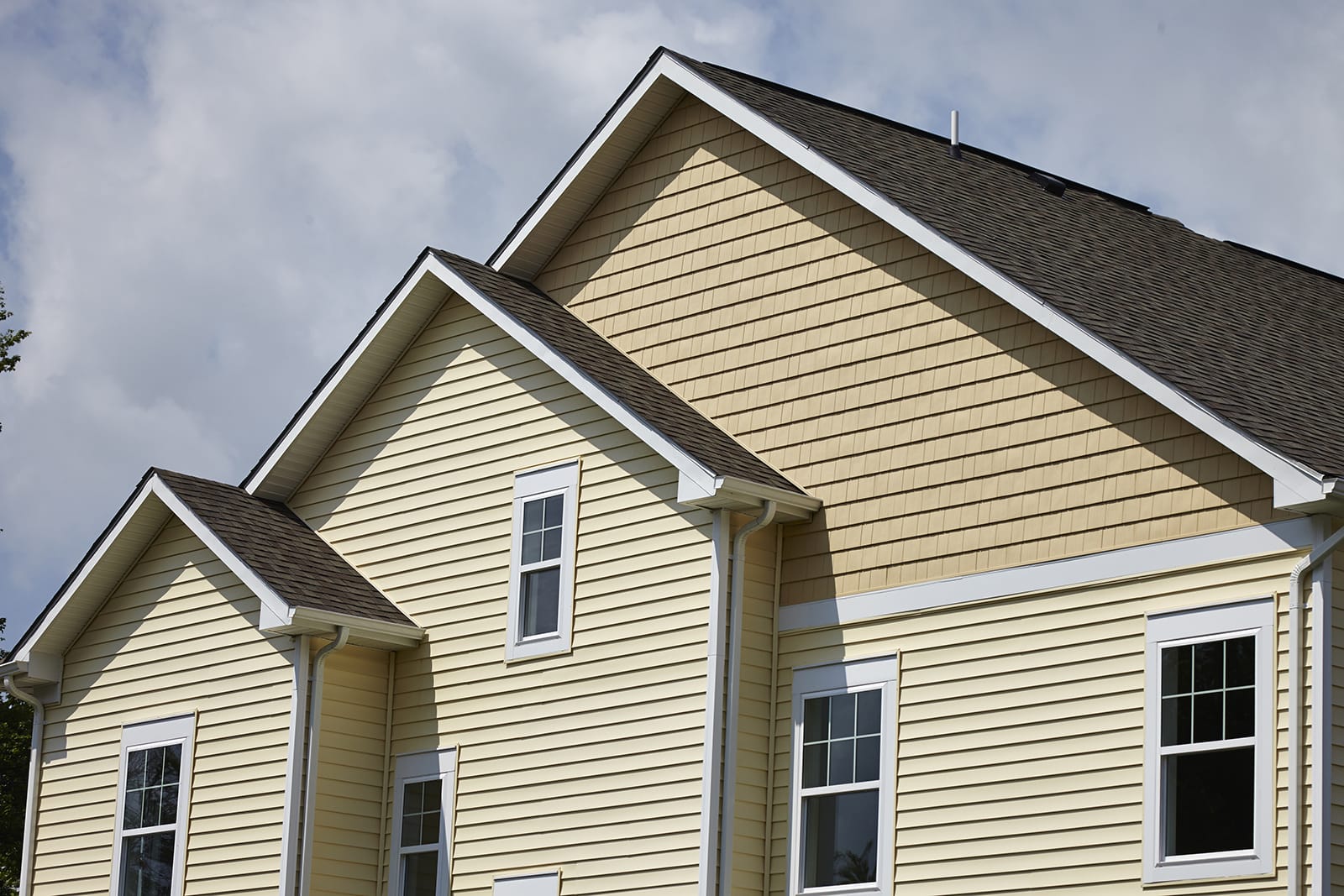You’ve probably looked at your home’s exterior and thought it could use a little refresh. Maybe the color feels dated, or it’s just lost that sparkle it once had. The idea of painting vinyl siding may have crossed your mind because it sounds like a fast and affordable way to boost your curb appeal.
It’s true. You can absolutely paint your vinyl siding. But just because you can do something, does that mean you should? Before you run out to buy siding paint and brushes, there are some serious things to weigh, as a botched paint job can cause major siding issues.
This decision extends beyond simply selecting a new paint color. It affects your home’s value, its protection from the elements, and your wallet over the long haul. Let’s walk through what you need to know in this comprehensive guide.
Does Painting Void Your Siding Warranty?
This is the first question you should ask, and it’s a big one. Most major siding manufacturers won’t honor their warranty if you paint the vinyl. The second a coat of paint goes on, that warranty protection likely goes out the window.
Vinyl siding is engineered to perform as is, without any coatings. Applying paint can change how the material behaves, especially with heat and moisture. Manufacturers won’t be responsible for failures caused by a modification they didn’t approve.
Before you do anything else, find the warranty for the siding on your home. If your warranty has already expired, this might not be a deal-breaker. But if it’s still active, you’re giving up a valuable layer of protection.
The Risk Hiding Beneath the Surface
Your siding is more than just decoration. It’s your home’s primary shield. It protects the structure from rain, snow, and wind, and is the first line of defense in pest control. Painting only addresses the surface appearance, which can be a risky move.
When professional contractors install new siding, they first remove all the old material. This gives them a clear view of the wall sheathing underneath, which is the perfect time to find and fix hidden problems. This could include water damage, dry rot from a slow leak, or even a termite infestation.
Painting simply covers everything up, providing a temporary fresh start but ignoring deeper issues. Any underlying problems will be trapped behind a fresh coat of paint, where they can worsen without your knowledge. That small spot of moisture damage can become a massive mold problem that costs thousands to fix.
Furthermore, if your current siding has cracks or holes, paint won’t fix them. These damaged areas remain weak points where water and insects can enter. Paint might hide them for a while, but it doesn’t address the core problem, which can lead to more extensive siding repairs later.
A Critical Factor in Painting Vinyl Siding: Your Color Choice
If you move forward with painting, your color choice is one of the most important decisions you’ll make. You can’t just pick any paint color you love. Choosing the wrong one, particularly a color darker than the original, can physically damage your siding.
Vinyl is a type of plastic that expands and contracts with temperature changes. Siding manufacturers account for this movement based on the original siding colors. Dark colors absorb far more heat and light than lighter colors due to sun exposure.
If your siding was originally a light beige and you paint it a dark navy blue, it will absorb more solar heat than it was designed for. This extra heat can cause the vinyl panels to warp, buckle, twist, and sag. The damage can be severe and isn’t reversible, leaving you with a distorted mess.
To be safe, the rule is to choose a paint color that is the same shade or a lighter shade than your siding’s original color. Many paint companies offer color guidance and specific palettes for this purpose. For example, some brands, such as Benjamin Moore, have “vinyl-safe” color ideas formulated to prevent heat-related warping.
These paints have a specific light reflective value, or LRV, that is safe for vinyl. A higher LRV number means the color reflects more light and is a safer choice. Finding the perfect color means balancing your aesthetic desires with these technical requirements.
Don’t Forget About Insulation and Energy Bills
An exterior remodeling project is a great opportunity to improve your home’s energy efficiency. This is another area where applying paint comes up short. A new layer of paint does nothing to improve your home’s insulation.
Your heating and cooling costs will remain exactly the same. However, if you choose to replace your siding, you get a golden opportunity to add insulation to your home’s exterior walls. Before the new siding goes up, contractors can install a layer of rigid foam board insulation.
Even better, you can opt for insulated vinyl siding. This product has a contoured layer of foam insulation permanently bonded to the back of each panel. This added insulation wraps your home in a protective layer, raising its overall R-value, which is a measure of thermal resistance.
A higher R-value means less heat escapes in the winter and less cool air escapes in the summer. This translates directly into lower energy bills month after month. The foam backing also makes the siding more rigid and durable against impacts from hail or debris.
If You Decide To Paint, Here’s How To Do It Right
Let’s say you’ve weighed the pros and cons, and painting still feels like the right choice for your situation. Maybe your siding is old, out of warranty, and you just need a temporary cosmetic fix. To give yourself the best chance of success, you must follow the correct steps for surface preparation and application.
Step 1: Thorough Surface Prep
You can’t skip this step because it’s the foundation of a lasting paint job. The success of your vinyl painting project depends almost entirely on how well you prepare the surface. Vinyl siding develops a chalky film over time from oxidation, and paint won’t stick to it.
You need to clean every square inch of your siding. A pressure washer on a low setting can work, but be careful not to force water behind the panels. A safer method is scrubbing by hand with a soft-bristled brush and a cleaning solution, such as water mixed with a good siding cleaner.
Rinse everything completely and let the siding dry for at least 24–48 hours. If you start painting over a damp surface, the moisture will get trapped and cause the paint to bubble and fail. A perfectly clean surface is essential before you start painting.
Step 2: Choose the Right Materials
Don’t just grab any exterior paint. You need a paint that is specifically designed for use on vinyl. Look for a high-quality, 100% exterior acrylic latex paint, as its paint quality will directly impact the durability of your project.
These paints contain resins that allow them to expand and contract with the vinyl. A less flexible paint, such as interior ceiling paint, will crack and peel quickly. Remember the color rule: stick to vinyl-safe popular colors that are light and have a high LRV.
You may also need to consider whether to prime the vinyl siding. While many modern exterior acrylic paints are self-priming, using a bonding primer is a good idea for bare siding or heavily weathered surfaces to ensure proper adhesion. Brands such as Benjamin Moore offer excellent options, like its Regal Select line, for this purpose.
Step 3: Watch the Weather and Apply Carefully
Picking the right day to paint is crucial. You want a mild, overcast day with low humidity and no wind. Direct sun exposure can cause the paint to dry too fast, leading to brush marks and poor adhesion.
Before you begin applying paint, be sure to tape plastic sheeting over windows, doors, light fixtures, and any nearby exterior brick. For the smoothest finish, use an airless paint sprayer. It applies a thin, even coat quickly, but it’s best to have a second person follow behind with a brush or roller to work the paint into the surface texture, a technique called back-brushing.
Apply two thin coats rather than one thick one. Let the first coat dry completely before applying the final coat. This patience is key to achieving results that will last as long as possible and give your home that desired fresh coat.
Frequently Asked Questions
Here are answers to some frequently asked questions about painting vinyl siding.
How long will a paint job on vinyl siding last?
A quality paint job, completed with proper surface preparation and the right materials, such as exterior acrylic latex paint, can last between 5 and 10 years. However, this depends heavily on your climate, the amount of sun exposure, and the quality of the application.
Can I paint my vinyl siding a darker color?
It’s strongly recommended not to paint your siding a color darker than its original shade. Dark colors absorb more heat, which can cause the vinyl panels to warp, buckle, and sustain permanent damage. Always check the LRV of your chosen paint color.
Do I really need to prime vinyl siding before painting?
While not always required, it’s a good idea. Many high-quality siding paint products are self-priming. However, using a bonding primer on very chalky, porous, or bare siding will provide a better, more durable finish.
What is the best paint for vinyl siding?
The best choice is a high-quality, 100% exterior acrylic latex paint. These paints are flexible and will expand and contract with the siding. Look for products specifically labeled as “vinyl-safe” from reputable brands.
Is it hard to paint vinyl siding yourself?
A do-it-yourself project is achievable but requires significant effort. The most critical and labor-intensive part is the surface preparation. If you’re not comfortable with the prep work or using a paint sprayer, hiring a professional siding contractor might be a better option to get a lasting finish.
Our Conclusion
It’s clear that painting vinyl siding is a more involved decision than it appears on the surface. While it can give your home a quick and affordable facelift, it comes with significant long-term considerations.
The choice really comes down to your goals. If you need a short-term solution on a tight budget and understand the risks, painting may be a viable option for you. However, if you’re seeking a long-lasting, durable, and comprehensive upgrade that enhances value and energy efficiency, investing in new siding is almost always the better option.
Carefully consider the condition of your current siding and your future plans. Whether you choose to paint or replace, making an informed choice is the best way to boost curb appeal and protect your home for years to come. Your decision will set the course for your home’s appearance and maintenance for the next decade.












